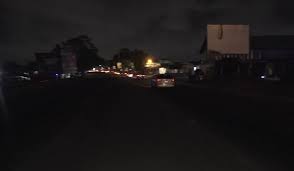As the festive season approaches, Accra’s streets should be glowing with light and excitement. Instead, as dusk falls, darkness takes over — and with it, fear. Once-vibrant roads now fade into shadow as non-functioning streetlights plunge large parts of the capital into gloom.
A recent tour of the city by Channel One News revealed a troubling pattern. From the Achimota Forest stretch through Kisseman, Dzorwulu, and Tesano, along the N1, and across major areas such as the Accra Mall, Shiashie, and Legon — the story is the same. Sections of the Ring Road, Kaneshie, Mallam, and even Kasoa remain in darkness.
Everywhere, the absence of functioning streetlights has made driving and walking at night increasingly dangerous.
Rising Road Crashes
According to the National Road Safety Authority (NRSA), Ghana recorded 13,489 road traffic crashes between January and December 2024 — an average of eight deaths per day. In the Greater Accra Region alone, reported crashes rose from 284 in June 2024 to 297 in June 2025, representing a 4.58% increase.
Poor visibility caused by non-functioning streetlights is a key contributor. Drivers struggle to identify pedestrians, potholes, and oncoming vehicles, leading to avoidable accidents.
“The situation is really troubling. Our roads are so dark that even when someone is being attacked, people nearby can’t see,” said Daniel, a driver from Kasoa. “Going to town at night has become scary. The government must quickly fix the streetlights.”
Another driver, Hafiz Abdul, shared his experience: “For those of us whose headlights don’t cover a wide area, driving at night is risky. Just last week, I had an accident because I couldn’t see what was ahead.”
Security Threats in the Shadows
Beyond traffic safety, the darkness has emboldened criminals. Pedestrians are routinely attacked, robbed, and in some cases, assaulted under the cover of night.
A trader along the Achimota Forest–Kisseman stretch, Ama Boamah, recounted a harrowing case: “A young girl was attacked by thieves. They stole her items and even raped her. There were no lights, so no one could see or help. That stretch has become a crime zone.”
Another resident described a narrow escape: “Just recently, I was chased by robbers on this road. I ran as fast as I could. I can only imagine what would have happened if they caught me.”
Government Efforts and Setbacks
In February, Greater Accra Regional Minister Linda Ocloo announced a major streetlight restoration initiative. According to Citi Newsroom reports, over 150 streets were illuminated, with 85% of the project completed, surpassing her initial 70% target.
However, persistent issues such as cable theft and funding constraints have stalled progress. While official figures suggest improvement, many residents insist the impact on the ground remains limited.
Experts say sustained collaboration among the MMDAs, the Ghana Highway Authority, and the Ministry of Energy is crucial to ensuring long-term solutions.
A Call for Responsibility
The problem isn’t only governmental. During my drive, I observed several streetlights stripped of cables — victims of theft and vandalism. These acts erase progress and endanger communities.
Where is our collective conscience when we destroy what is meant to protect us?
The darkness that now cloaks Accra’s streets is more than a power failure — it is a reflection of neglect and indifference. As the city readies for the season of celebration, it deserves more than flickering promises. Light must return, not only to our roads, but to our sense of shared responsibility.
By: Afua Adwubi Wiafe Akenteng


Comments are closed.